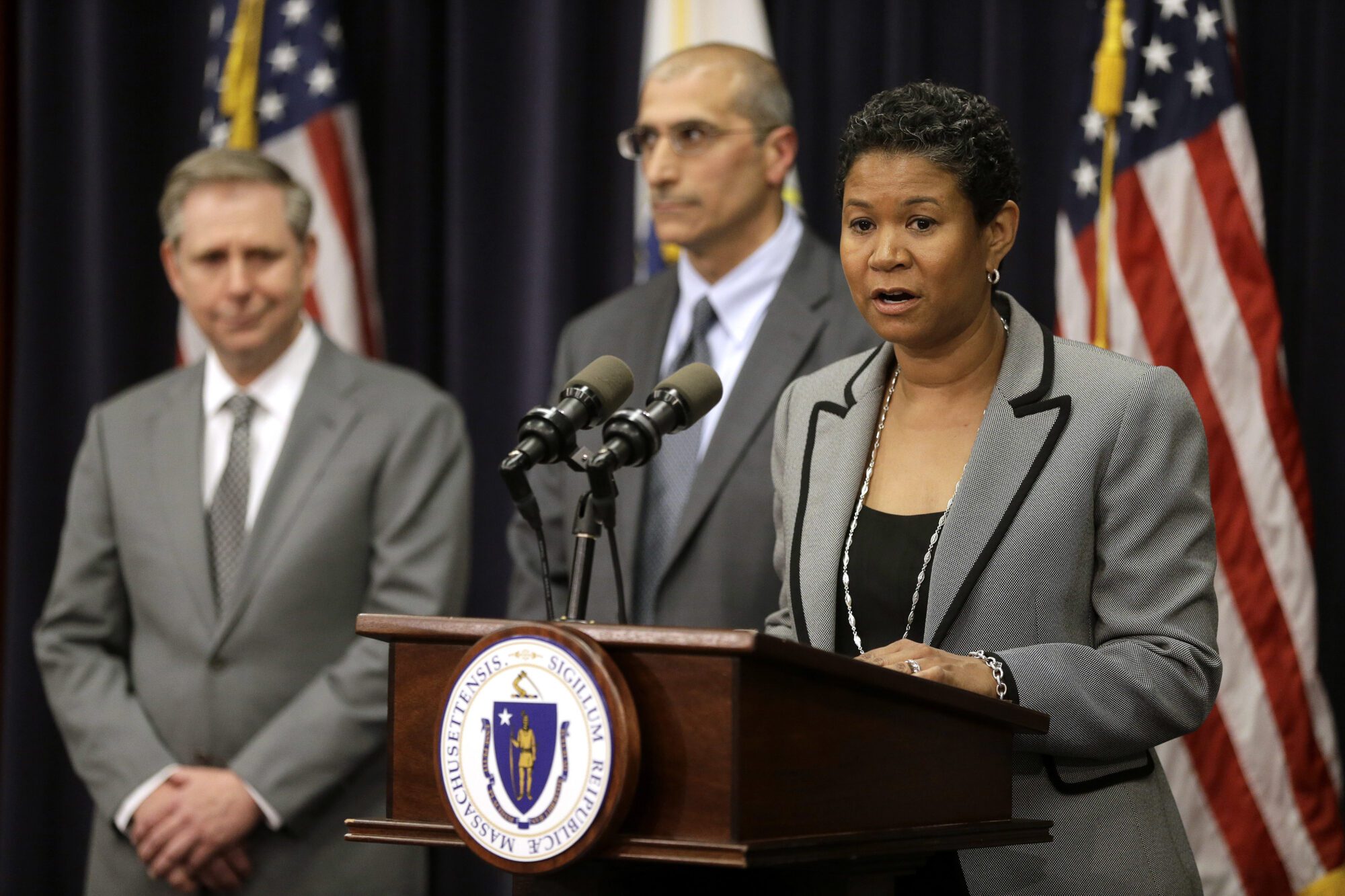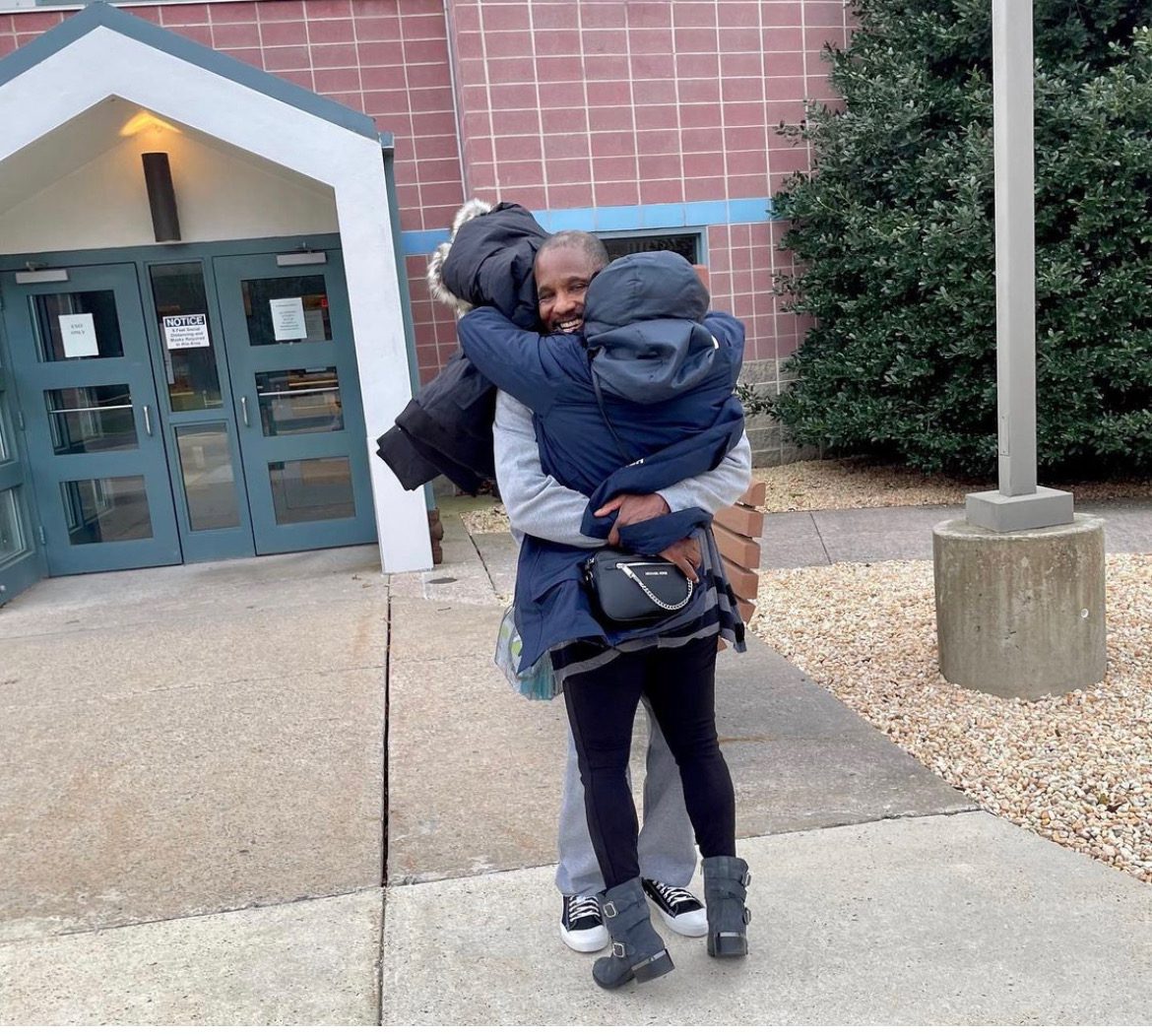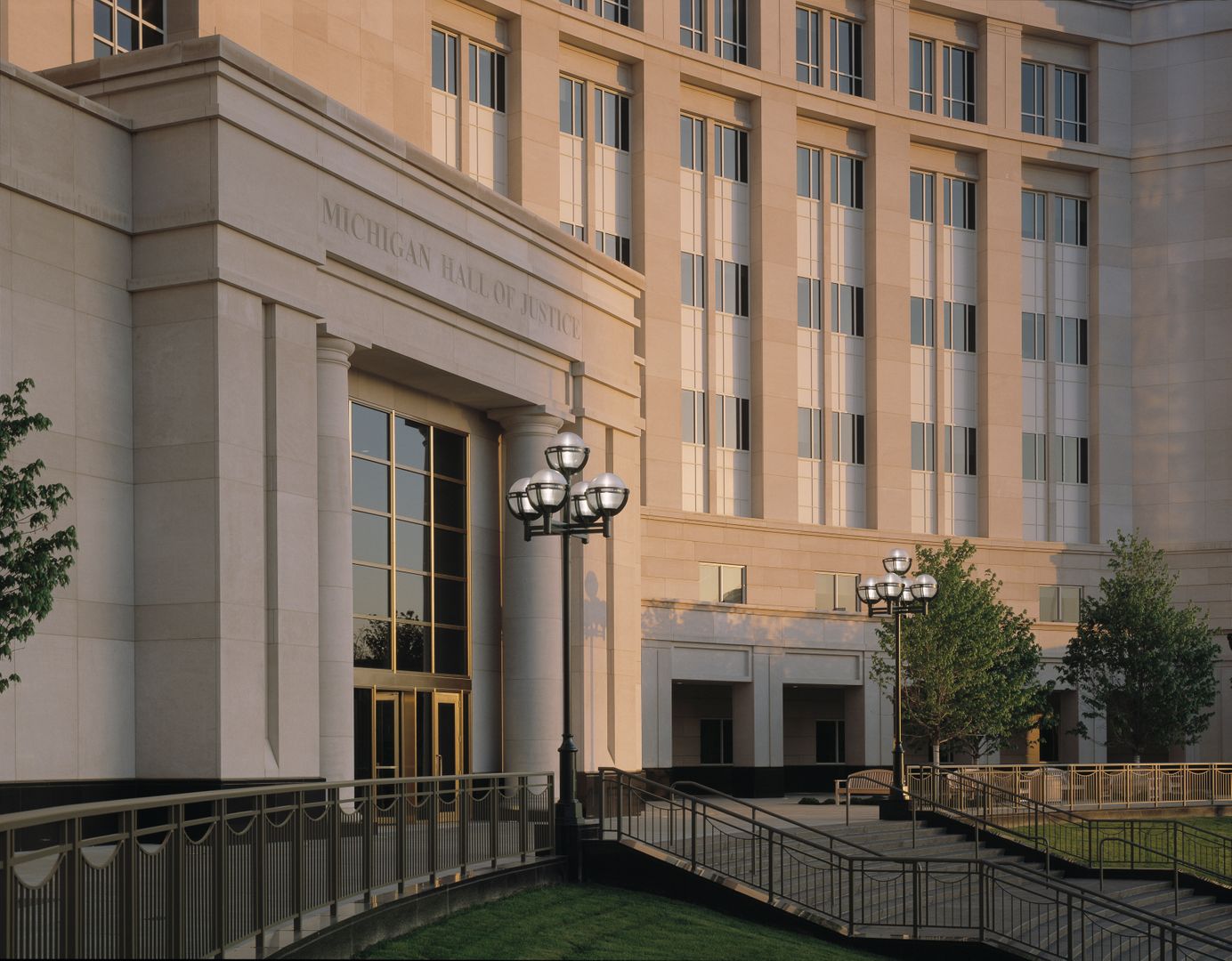A Wave of States Reduce “Death by Incarceration” for Young Adults
Massachusetts banned sentences of life without parole for “emerging adults” up to age 21, the latest in a series of states revisiting who counts as young in the eyes of the law.
Daniel Nichanian | February 2, 2024


When the Massachusetts supreme court banned sentences of life without the possibility of parole against children in late 2013, the state was ahead of the curve—just five states had taken that step as of the start of that year.
Today there are 28. In an unusually rapid sea change over the last decade, red and blue states alike have rushed to bar that punishment, which denies someone any possibility of ever leaving prison, for anyone under age 18. That includes GOP-run Ohio in 2021, and Democratic-run Minnesota and New Mexico last year.
Will a similar surge now shield even more youths from being incarcerated for life with no hope of release?
Once again, Massachusetts is ahead of the curve: The state supreme court issued landmark rulings on Jan. 11 that expanded its earlier holding, and raised the minimum age for a life without parole sentence from 18 to 21.
In a 4-3 vote, the majority ruled that youth aged 18 to 20 are never beyond redemption, and that they should receive the same consideration as minors due to their continuing mental development. “A sentence of life in prison without parole eligibility review for those up to age twenty-one—individuals with diminished culpability and a heightened capacity for change—is no less cruel or unusual than it is for those up to age eighteen,” Justice Scott Kafker wrote in a concurrence that drew a direct line between the court’s decision in 2013 and its new ruling.
The decision doesn’t guarantee actual release to anyone. Rather, it grants people opportunities to appear in front of a parole board to showcase their growth—and only once they’ve spent 15 to 30 years in prison, depending on the case. State officials estimate that the ruling made roughly 200 people newly eligible for a parole hearing.
“Emerging adults… must be granted a ‘meaningful opportunity to obtain release based on demonstrated maturity and rehabilitation,’” Chief Justice Kimberly Budd wrote for the majority, quoting from a 2010 U.S. Supreme Court ruling that applied to children. The court was considering the cases of two people, Sheldon Mattis and Jason Robinson, who were convicted of first-degree murder and sentenced to life without parole as 18- and 19-year olds. (All seven justices who took part in the decision were nominated to the court by Governor Charlie Baker, a Republican.)
Massachusetts is just the second jurisdiction to ensure that everyone incarcerated over a crime committed before age 21 has some opportunity for release.
In 2021, Washington, D.C., adopted a “second look” reform that’s functionally equivalent: People convicted as young adults can ask for a review after serving 15 years in prison. (D.C. does not call this review “parole,” so people in this group can technically still be sentenced to life without parole, but they have a mechanism to petition for release.)
In fact, D.C. applies that reform all the way to age 25, rather than 21, a narrower definition of who is a full adult in the eyes of the law.
The Massachusetts ruling also builds on other very recent gains for reformers pushing for a higher cutoff age than 18.
Just over the last twelve months, Connecticut and Illinois both adopted laws to restrict LWOP up to age 21. In Michigan and Washington state, judges banned sentencing rules that mandate life without parole for people under 19 and 21, respectively. Each has important carve-outs: Illinois’ law does not apply to people convicted of predatory sexual offenses, nor does it apply retroactively; Connecticut’s law applies only to people convicted before 2005; in Michigan and Washington, judges still have discretion to impose the sentence as long as it’s not automatic. But each concretizes the same principle as Massachusetts’ ruling: that 18 is not the proper place to set a limit for who gets to be considered a young person deserving of special protections.
“People who committed crimes at a very young age have the capacity to turn their lives around and become productive citizens,” said Alex Taubes, a Connecticut lawyer who represents people on parole and supports his state’s 2023 reform.
Preston Shipp, who advocates for such reforms nationwide as policy counsel with the Campaign for the Fair Sentencing of Youth, says his advocacy work gets easier when he can tell lawmakers that more and more states have acted against juvenile life without parole. “When one domino falls, it causes the next domino to fall,” Shipp said. “These are very important steps that we’re continuing to take on our journey to make sure that people who don’t have fully formed brains are not thrown away and told there’s no hope.”
Reform proponents in other states are already lining up to be next. California’s supreme court heard a similar case in early December; it could prohibit life without parole up to age 26.
In Washington state, legislation that would end life without parole up to age 25 received its first hearing on Jan. 15, just days after the Massachusetts ruling. Chelsea Moore, an advocate with the ACLU of Washington, and co-founder of Look2Justice, an organization centered on the rights of incarcerated Washingtonians, is championing that bill. “It’s wonderful that we see this acknowledgement spreading across the U.S.,” she said. “It’s very helpful for us to be able to interact with folks in those states, and to point to those states.”
This momentum reflects the extraordinary changes since the “superpredators” panic of the 1990s, which fueled more life sentences for children. The notion that a young person who commits a crime is particularly dangerous and unredeemable has been debunked, replaced with a consensus that youth is redeeming, a sign that one really could change. But to translate that idea into law would seem to demand drawing a bright line—a legal age that separates youth and adulthood, at least for the purpose of deciding what counts as too young to be sentenced to die in prison. And with different visions of change competing, that task itself is making reformers confront the nuances of age and development, and ponder how to best restrict a sentence that many refer to as “death by incarceration” without leaving too many people behind.
This sense of an emerging momentum is not just a political boost for reformers like Moore. In the Massachusetts ruling, it actually served as legal evidence.
To justify raising the age from 18 to 21, the state supreme court appealed to the “evolving standards of decency,” an approach to constitutional law that connects people’s rights to contemporary norms, and that’s long been used to expand protections on juvenile defendants. The majority talked about recent laws and rulings in other states—as well as reforms in other nations—to conclude that these standards are shifting.
Among the reforms the court cites: D.C.’s 2021 law, and Illinois’ 2023 law.
Bolts asked Lindsey Hammond, policy director of the Illinois-based organization Restore Justice, for her reaction about the Massachusetts court drawing on a law she championed hundreds of miles away. “I think it’s incredible to see this momentum continue to build,” she said. In turn, she hopes that this out-of-state ruling can help her persuade Illinois lawmakers to revisit last year’s law and make it retroactive.
“It is so encouraging for legislators to know that other states are reaching that same decision that young people are different,” she explained.
Besides these “evolving standards,” the Massachusetts court grounded its ruling on research in neuroscience and psychology that shows that people’s brains continue to develop into their mid-20s. “Advancements in scientific research have confirmed what many know well through experience: the brains of emerging adults are not fully mature,” the majority wrote.
Stephanie Tabashneck, a psychologist and senior fellow at the Center for Law, Brain and Behavior at Harvard Medical School, offers an example: Young adults “can’t regulate their emotions” as well as older adults because their frontal lobes are not fully developed. Tabashneck is not surprised that such findings resonated with the court. She often gives presentations to judges and attorneys, showing them brain scans highlighting the marked differences between younger and older adults; just seeing those images has a powerful effect on her interlocutors, she said.
Some public officials echoed the science in praising the Massachusetts ruling. “The practice of putting a person behind bars forever, without paying attention to decision-making ability based on age and the science of brain development, should end,” Kevin Hayden, the district attorney of Suffolk County (Boston), said in a statement. Hayden succeeded Rachael Rollins, a reform-minded DA who’d also backed the litigation against life without parole, as well as efforts to raise the age of youth justice from 18 to 21 in other contexts.
But here’s a rub: Much of this research has found that people’s brains continue developing for years beyond age 21, leaving a gap with where the Massachusetts justices landed. The majority recognizes this, writing that “we acknowledge that the scientific record in this case suggests that the unique attributes of youth may persist in young adults older than twenty-one.”
And here, too, the majority invoked examples from other states to explain how it reached its decision—except this time, it did that to justify not going up higher, say to 25, rather than to support going beyond 18: “The contemporary standards of decency that govern our decision today do not suggest a societal consensus that those aged twenty-one and above should be treated differently from older adults.”
On this point, the dissenting justices harshly criticized the majority for having it both ways. “[E]ven if it could, science does not definitively place the line of brain maturation at twenty-one, but rather suggests that it extends into the mid-twenties,” wrote Justice David Lowy. He accused his colleagues of “manufactur[ing] a new category of individuals entitled to distinct constitutional treatment,” and usurping the prerogative of lawmakers by deciding what he argues ought to be a political question—what is youth for the purposes of punishment.
“Perhaps nothing speaks louder to the flaws in the court’s holding,” Lowy wrote, “than the court having crafted a line that ends at age twenty-one, thereby engaging in legislative line-drawing inconsistent with the science upon which it relies.”
If there’s no switch that flips in a person’s brain the day they turn 18, neither is there one the day they turn 21. For Lowy, the seeming arbitrariness of setting a line at one’s 21st birthday was a reason to not raise the age at all. But for some reformers, it’s a reason to think even bigger.
Moore, the Washington advocate, feels a twinge of concern that if politicians and judges settle on 21 as the new age for juvenile justice, it may make it trickier to push bills with a higher age cutoff—like her state’s proposed legislation, which goes to 25, closer to what scientific studies envisage. “Just like the age of 18 was socially constructed, I think the age of 21 is also socially constructed,” she said. “We’re hopeful that we will continue to move past these social constructions of what we see as mature, into what we really know in science.”
Still, Moore is confident that, no matter how a particular reform defines who counts as young enough, it’ll pave the way for still more change down the line. Since Washington state abolished life without parole for teenagers under 18 in 2018, “We have people running nonprofits, we have people doing anti-violence work,” she said. “It’s so impressive what folks have done.” She points to a study conducted last year by two University of Washington scholars that showed low recidivism among the incarcerated people whose petitions were granted.
“We just know that that model can be replicated if we bump the age up to 25 for those folks serving life and long sentences,” she added. “Those folks can come home safely and our parole board can determine when it is safe to return to their homes: They’re already doing it, and so they would be able to do it for this other group of folks.”
James Zeigler, who leads the Second Look Project, a D.C.-based group that championed D.C.’s reform and has helped implement them, questions if an age cutoff is needed at all. “If you have to draw a line somewhere, identify when someone becomes a full blown adult for culpability purposes, [25] probably makes the most sense, and it makes more sense than 18 or 21, which are both ages after which people continue to grow and develop quite a bit,” Zeigler said.
But “developmental maturation process doesn’t end at 25 for anybody,” he pointed out. “While it may slow down as a kind of general rule, everybody continues to kind of grow, change, and mature… I have seen it in my work that plenty of people who commit crimes and make serious mistakes well into adulthood, past the age of 25, past the age of 30, can still grow and change in the way that we are talking about, that you hope for in people.”


Katy Naples-Mitchell, a special litigation advisor at Harvard Law School’s Criminal Justice Institute, also wonders how to draw a rigid line as to when one enters adulthood, when the characteristics that make humans capable of change don’t just disappear as one ages.
As the Massachusetts supreme court considered the Mattis and Robinson cases, Naples-Mitchell co-authored an amicus brief in support of ending life without parole for young adults in Massachusetts. The brief focused on the huge racial disparities in who’s serving life without parole in Massachusetts, finding that Black youth between ages 18 and 20 are sixteen times more likely to have received that sentence than white youth.
“People of color are facing more extreme charges for less serious conduct,” Naples-Mitchell told Bolts, explaining that Black people in particular are more likely to face a charge that triggers life without parole. Research by the American Psychological Association has found that people perceive Black youth as older than they are, making judges more prone to treating Black defendants as full adults than they are with white defendants.
Those disparities also apply across age groups, though. According to research conducted by the Sentencing Project, an organization that researches criminal justice, the majority of people serving life without parole in Massachusetts as of 2020 were Black and Latinx; those groups make up less than one-fourth of the state’s overall population. Studies nationwide show prosecutors and judges use harsher charges and sentences for people of color.
For Naples-Mitchell, the debate over young adults should be a gateway for a broader reckoning with how we dole out punishments. “This is an opportunity to reshape norms about life sentences more broadly, beyond the categorical approach in the brain science,” she said. She described the neuroscientific research as critically important to understanding the need for reform but also says “the brain science is a window for the public to access new empathy.”
“There are lots of ways to build on that,” she added, “whether it’s to build to another later-in-life bright line, or to think more holistically about sentences of life without parole, and whether that is something that public policy should promote.”
D.C. underwent just the trajectory that Naples-Mitchell envisions. It first provided an opportunity for release to anyone convicted as a minor. Then, in 2021, it extended that approach to offenses committed up to age 25. And then, the local government chose to expand its reform yet again by guaranteeing any incarcerated person a judicial review after a lengthy term in prison—no matter their age at the time of the offense. That ordinance was part of the omnibus package that was blocked by Congress and President Biden last year.
State Senator Liz Miranda, a progressive politician from Boston, wants Massachusetts to take the same route. She is sponsoring legislation that would repeal life without parole sentences regardless of the age at which someone commits a crime. Under the bill, anyone incarcerated in Massachusetts would receive a parole hearing after 25 years of incarceration.
At a hearing for her bill, Miranda talked about her brother, who was murdered in Boston, explaining why she opposes life without parole as a punishment for his alleged killer. “I believe life without parole is death by another name, and I do not believe in death sentences,” Miranda said.
Stay up-to-date
Support us
Bolts is a non-profit newsroom that relies on donations, and it takes resources to produce this work. If you appreciate our value, become a monthly donor or make a contribution.




